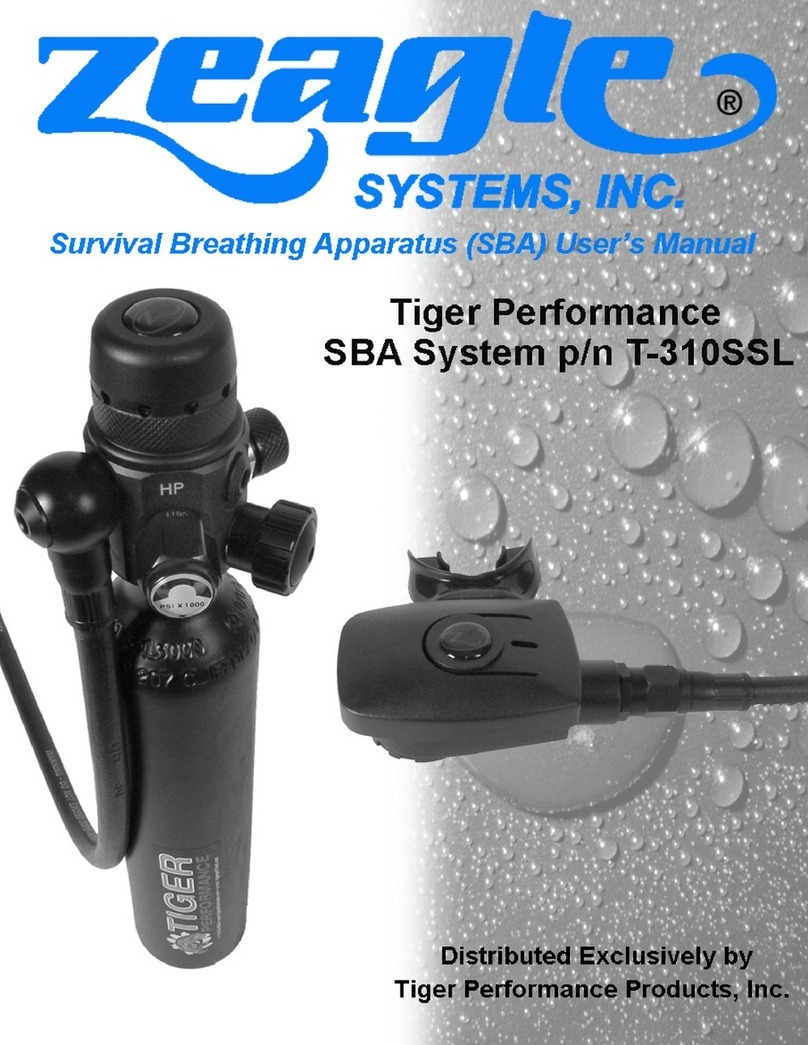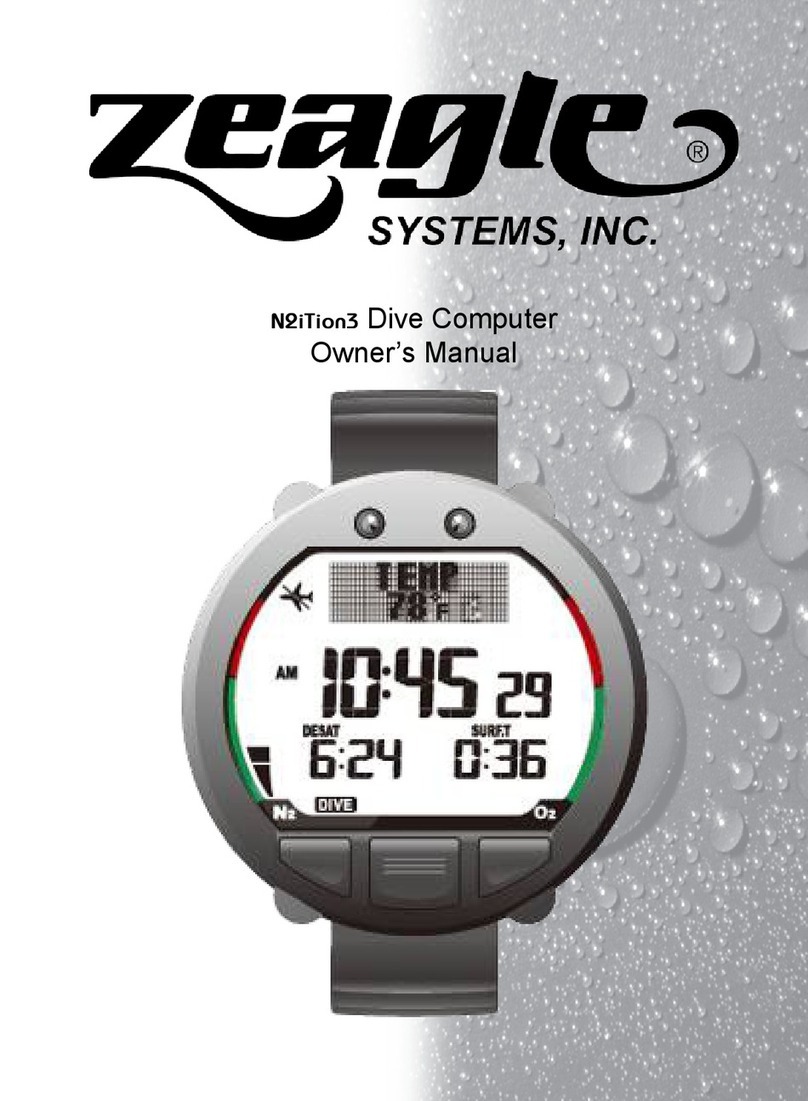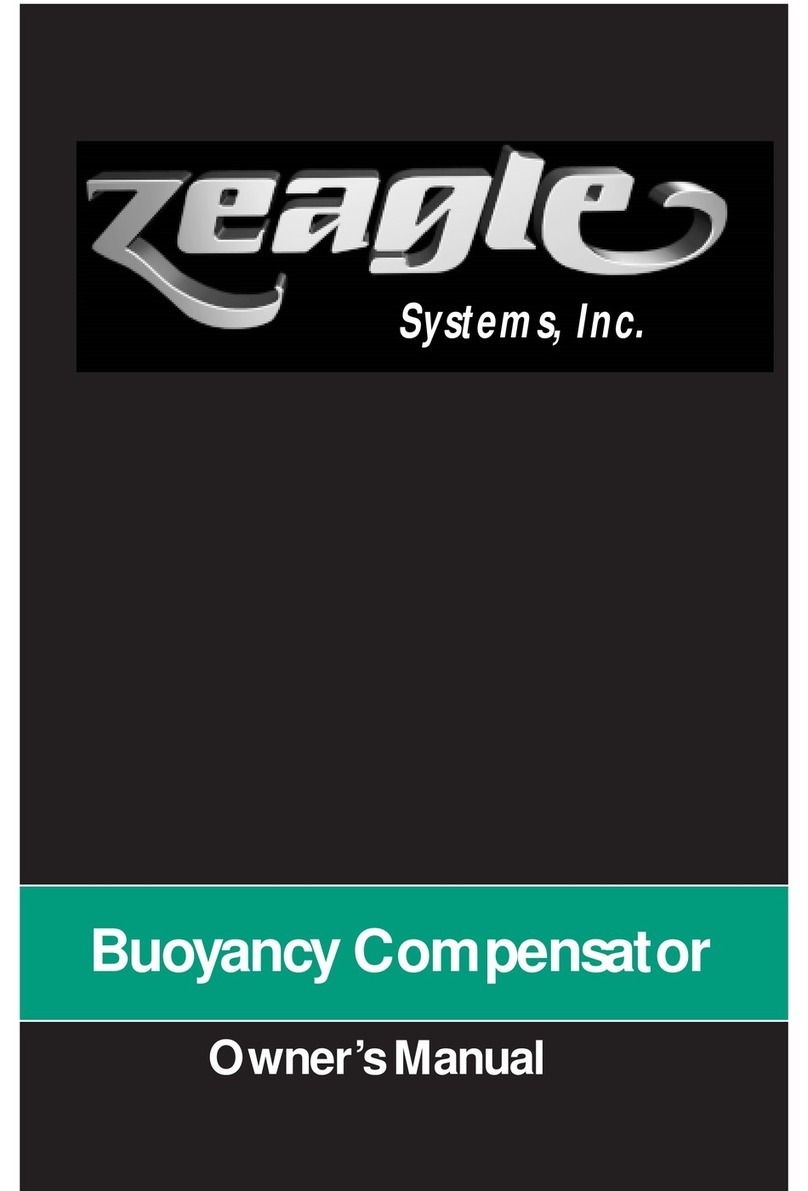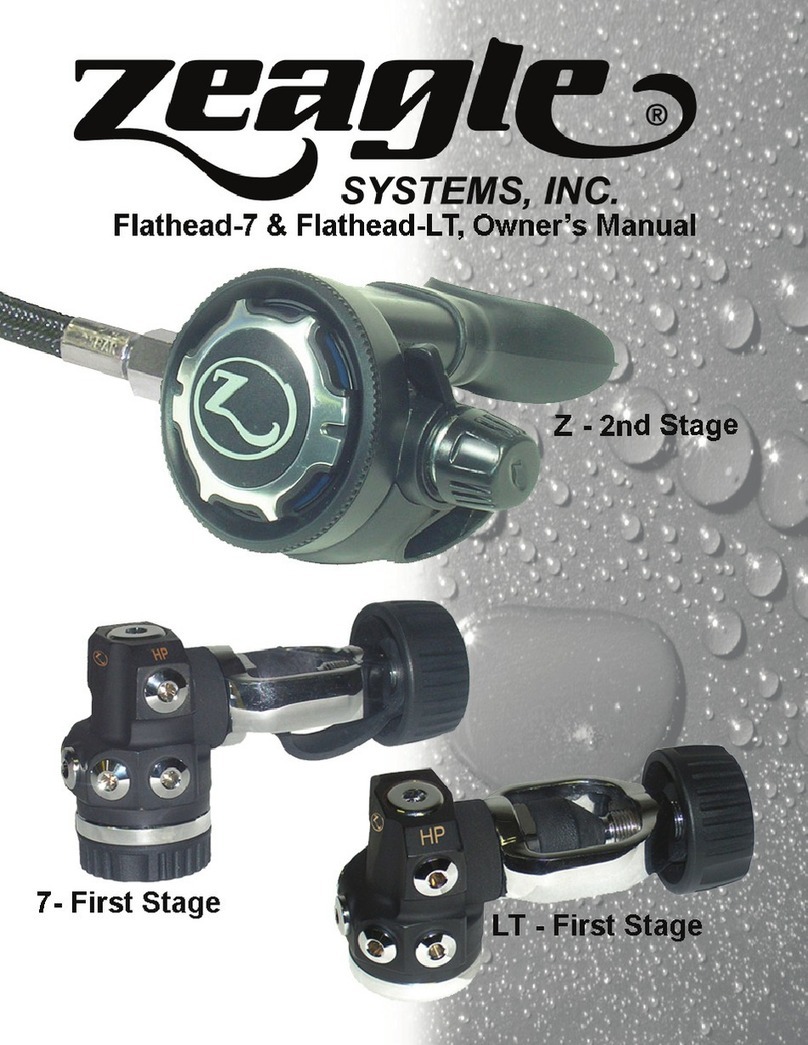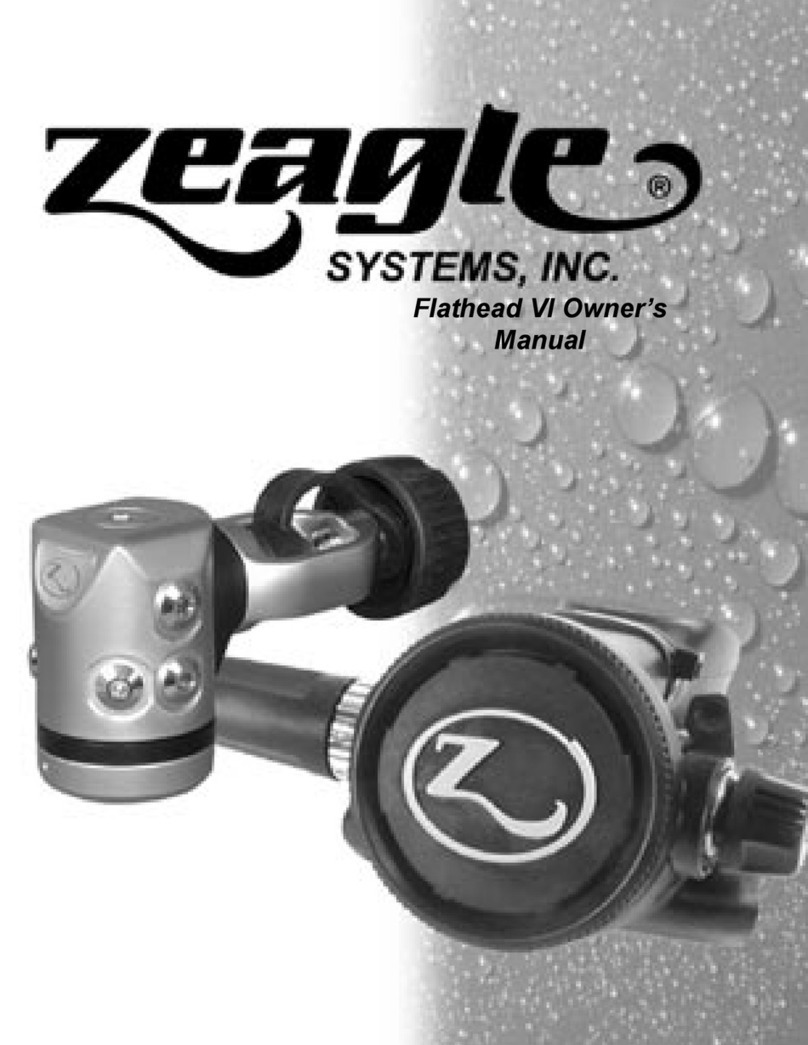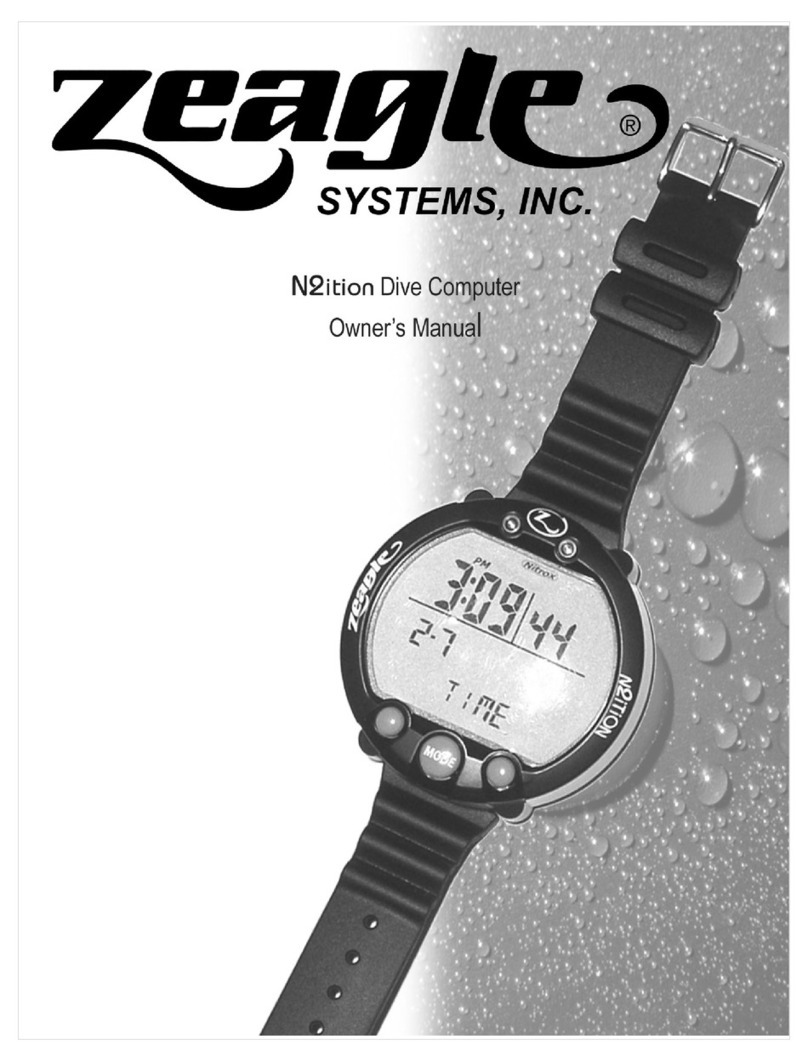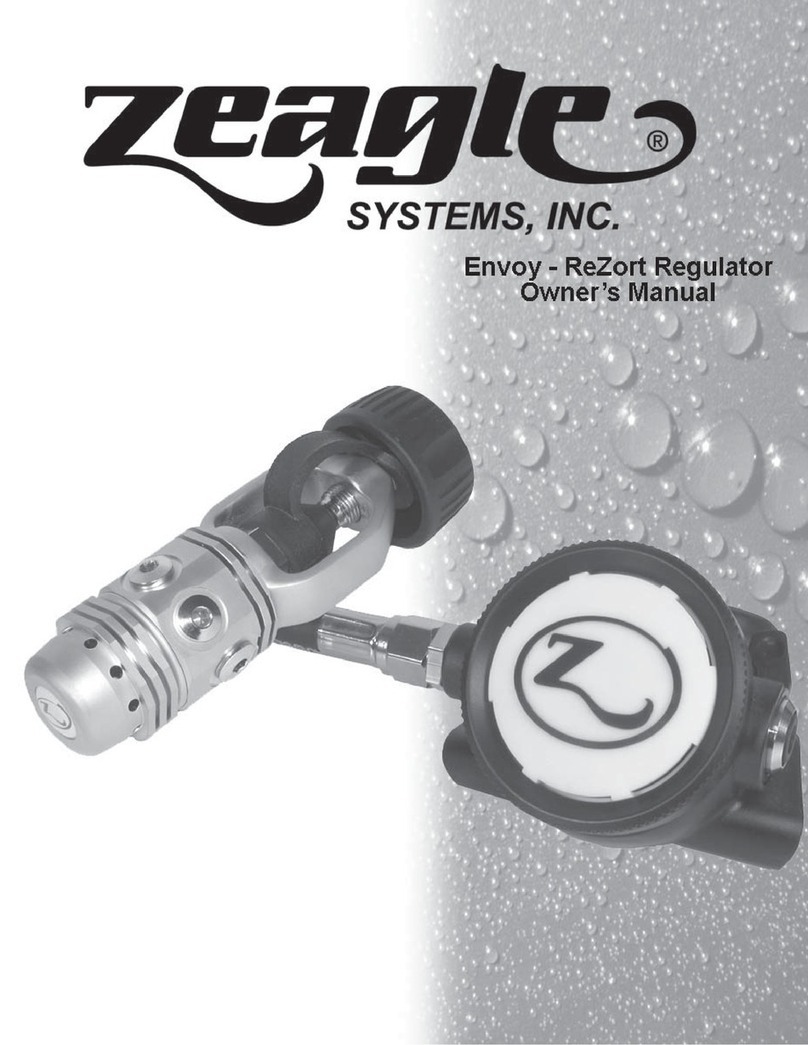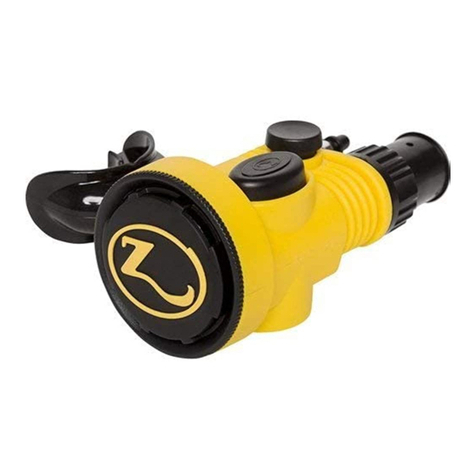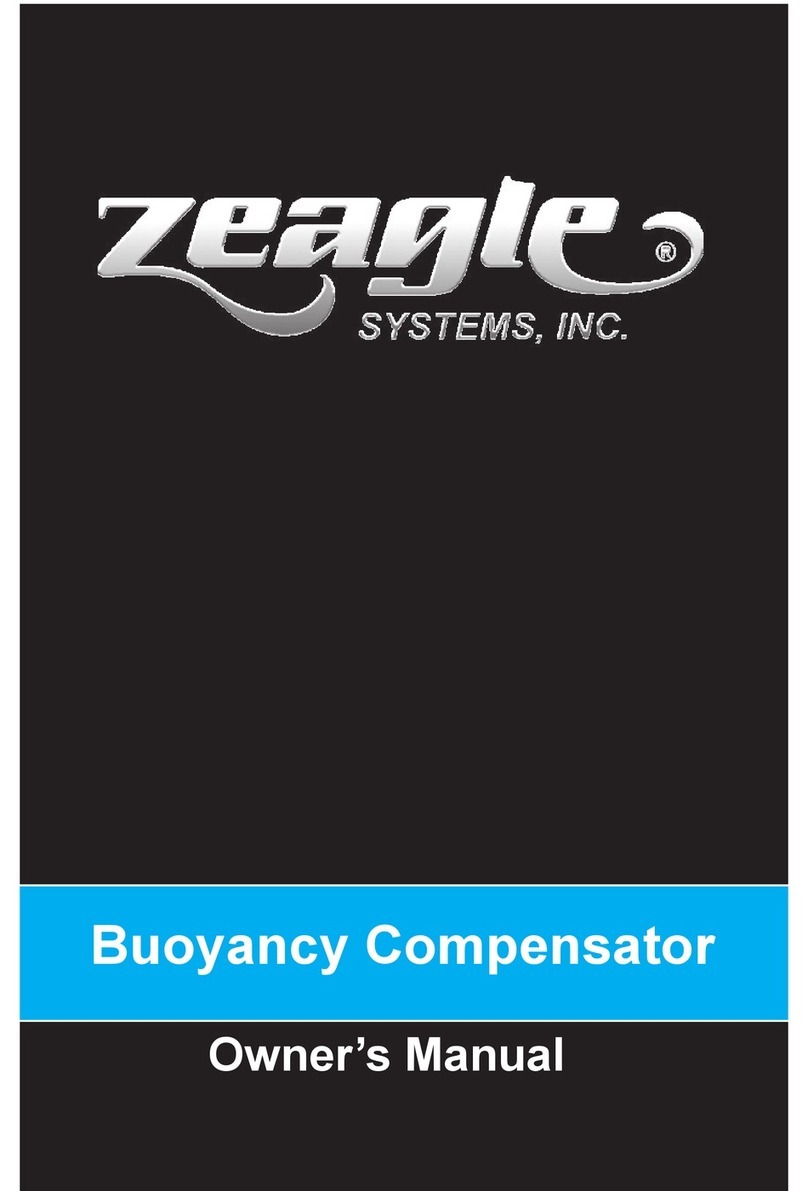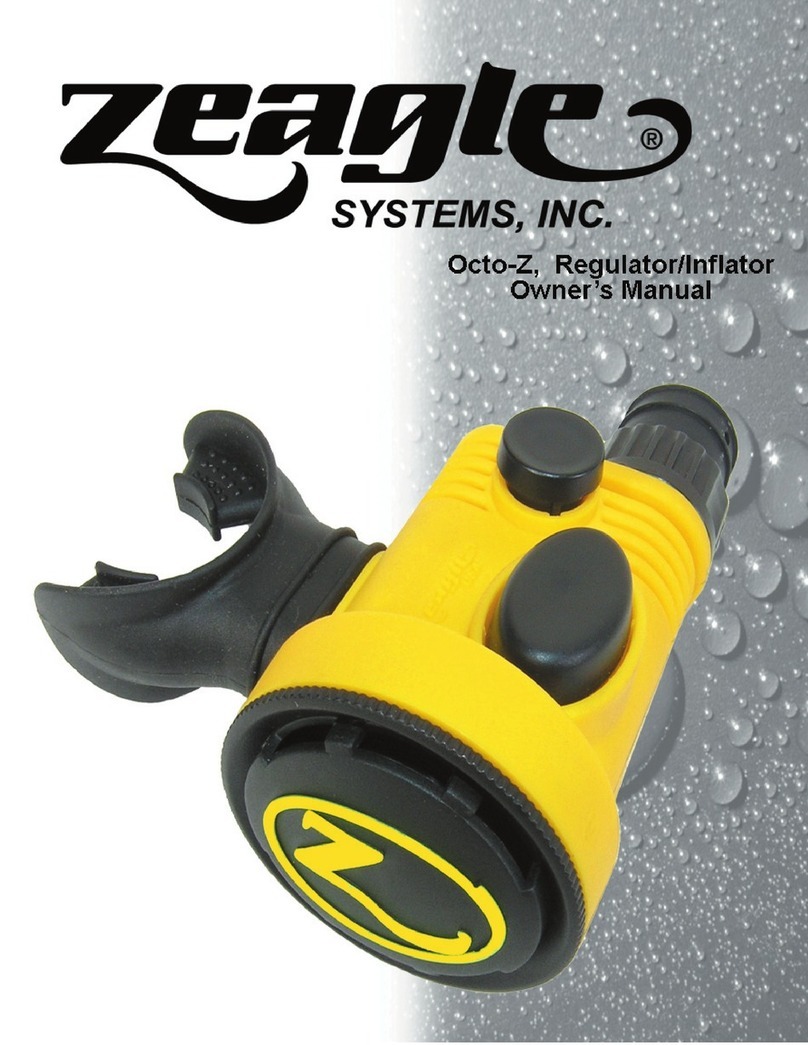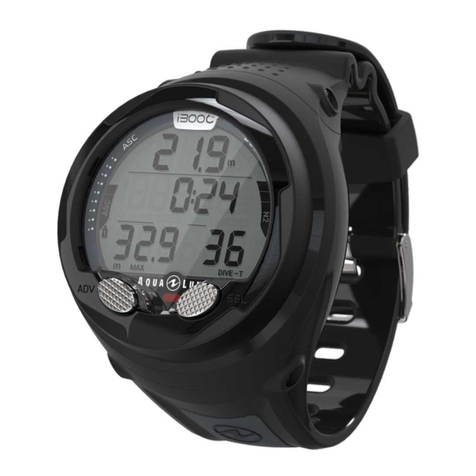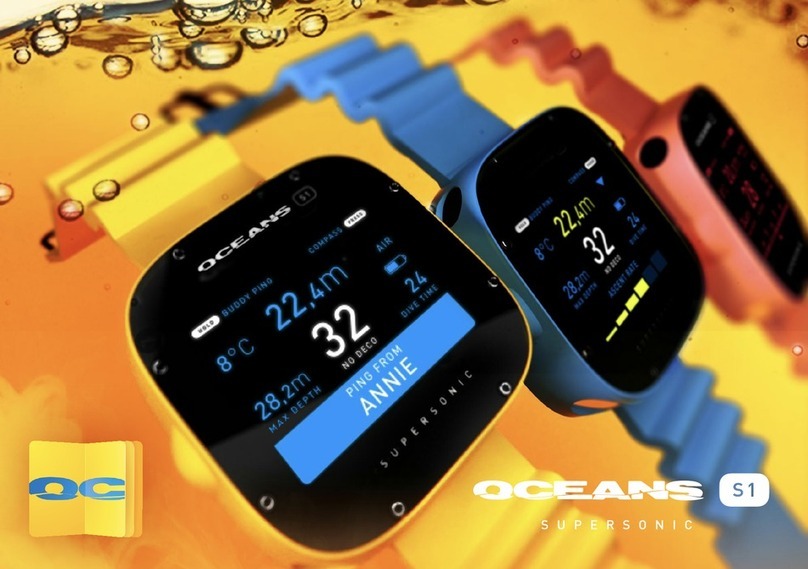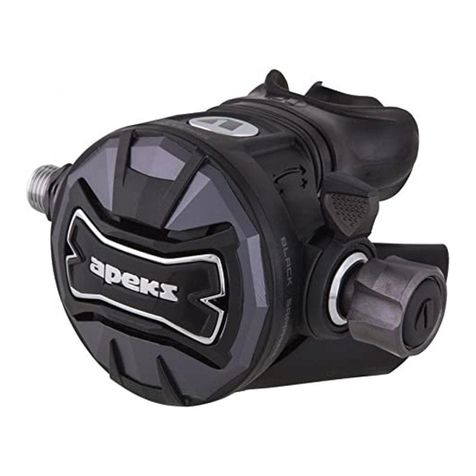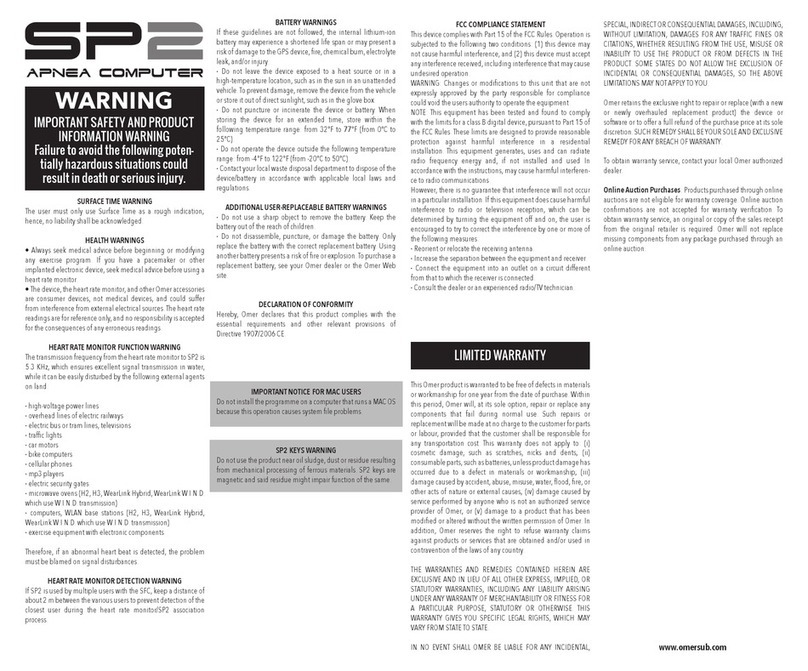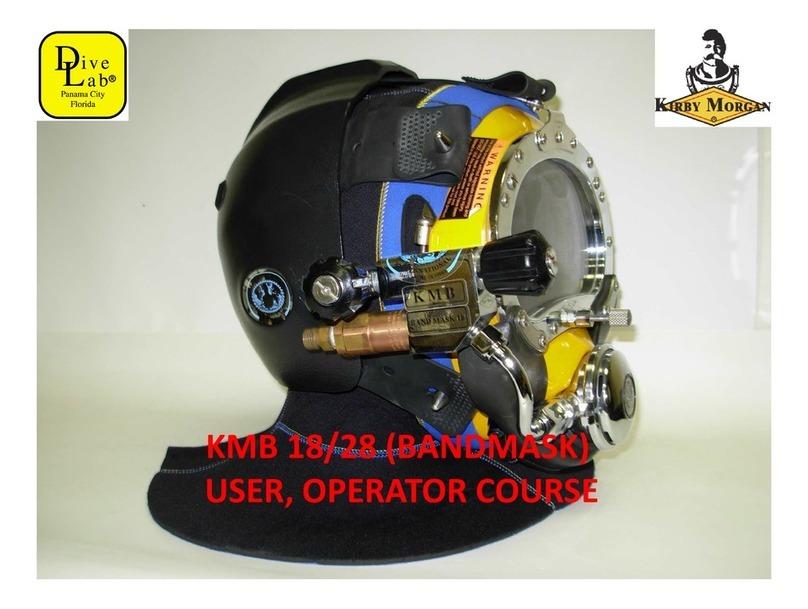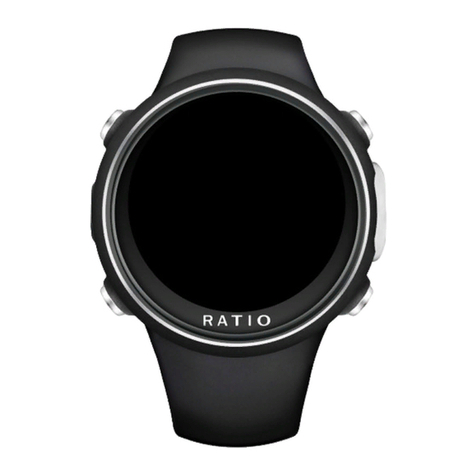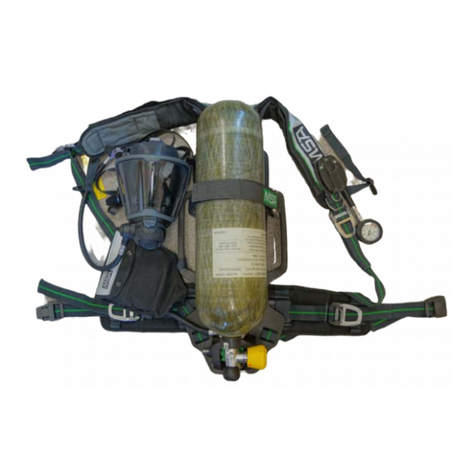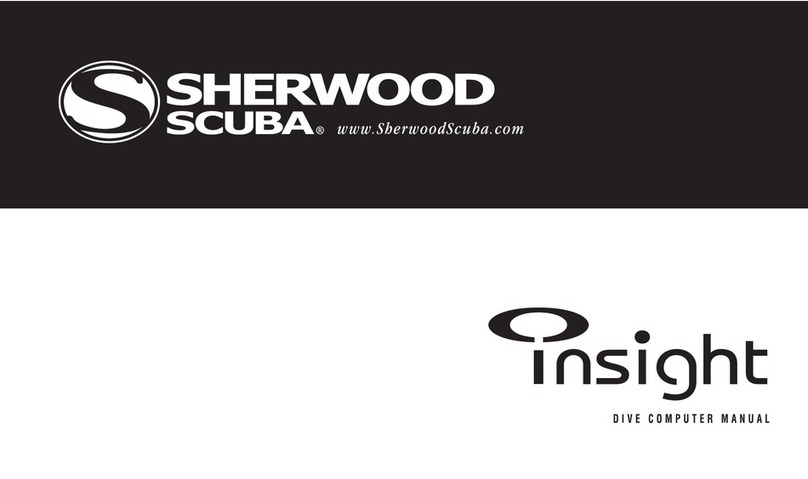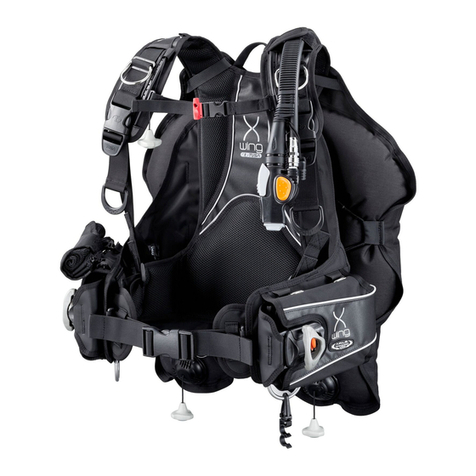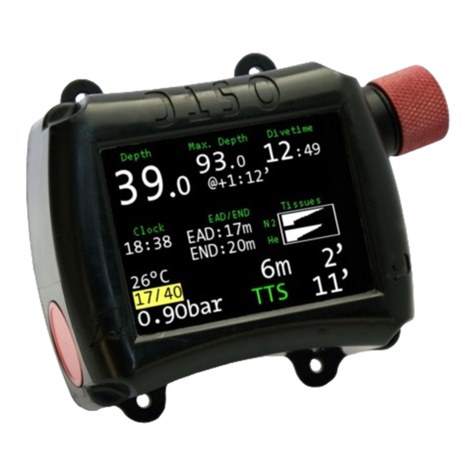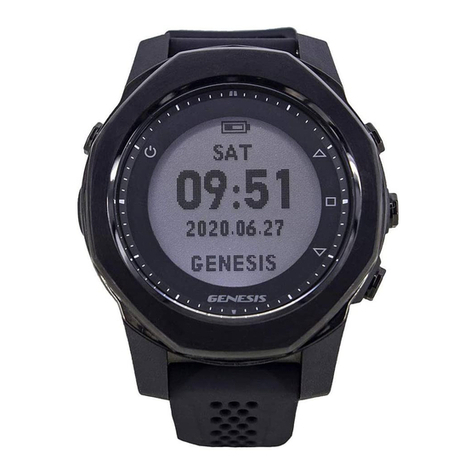5
WARNINGS
The N2iTion is designed to be used by only one diver at a time. Divers should not
share a single N2iTion, or any dive computer, on the same dive. Additionally, no
diver should lend his or her N2iTion to anyone else until it calculates that
no measurable residual nitrogen remains after previous dives, and displays neither
the “Desaturation Time” nor “No Fly” indicators while in Surface Mode. Further,
no diver should use his or her N2iTion for repetitive dives unless that same N2iTion
has accompanied him or her on all previous dives in the same repetitive dive series.
Neither the N2iTion, nor any other dive computer presently available, physically
measures the amount of nitrogen present in body tissues, or the rate at which this
nitrogen is being absorbed or released. Instead, the N2iTion monitors depth and
time, and uses this data to work a mathematical formula designed to emulate how
individuals in good general health, and whose physical characteristics do not place
them among those at higher risk of decompression illness, are assumed to absorb
and release nitrogen from body tissues. Thus, the N2iTion cannot compensate for
factors such as age, obesity, dehydration, cold or exertion, which experts believe
place divers at greater risk of decompression illness. If these, or similar factors
apply to you, use the N2iTion, and any other dive computer or dive table, with even
greater caution.
Experts still know surprisingly little regarding the exact nature and causes of
decompression illness (also known as decompression sickness, DCI, or DCS).
Susceptibility to DCI may vary substantially from person to person and from day
to day. Neither the N2iTion, nor any dive computer or table, can guarantee that you
will not suffer decompression illness. Even though you use these items correctly,
you may still suffer DCI. Do not rely on the N2iTion as your sole means of avoiding
decompression sickness.
Experts recommend divers wait at least 24 hours following any dive before ying in
an aircraft or driving to altitude. Failure to allow sufcient surface interval before
performing these activities may substantially increase the risk of
Decompression Illness (DCI).
Do not plan dives to depths deeper than those for which the N2iTion is capable
of displaying an available No-Decompression Limit. Doing so could cause you to
exceed the No-Decompression Limits or limiting PO2of 1.6 bar, which may in turn
substantially increase your risk of decompression illness or CNS Oxygen Toxicity
and can lead to serious personal injury or death.
